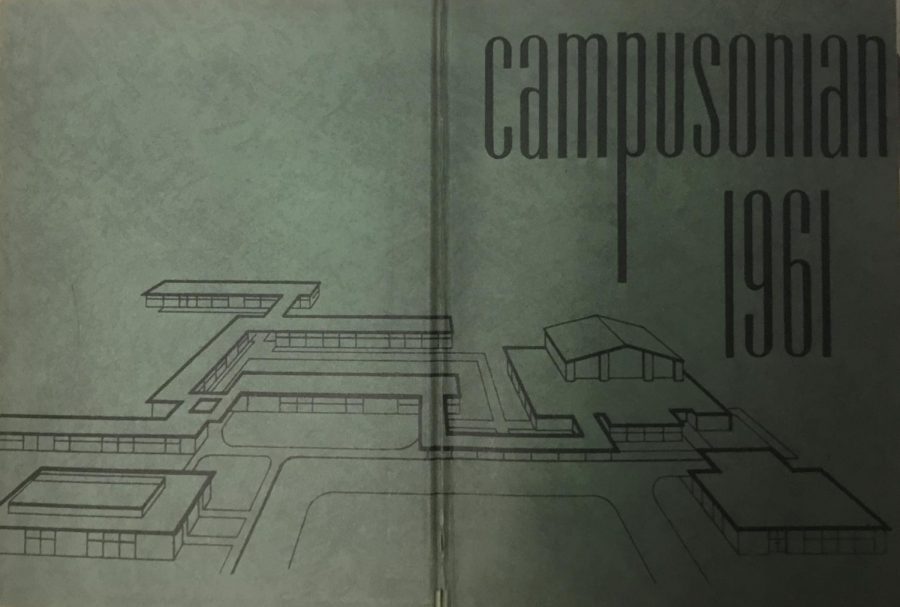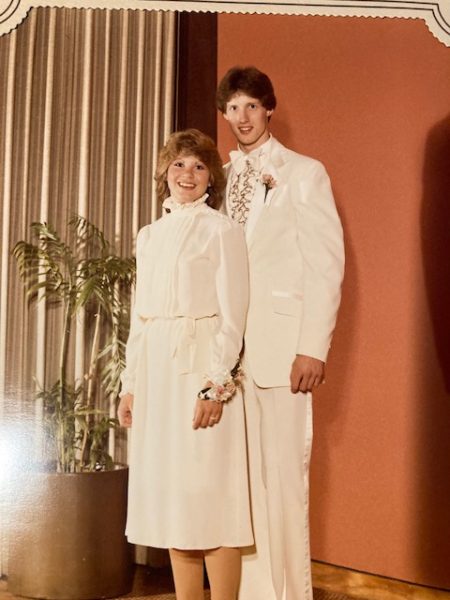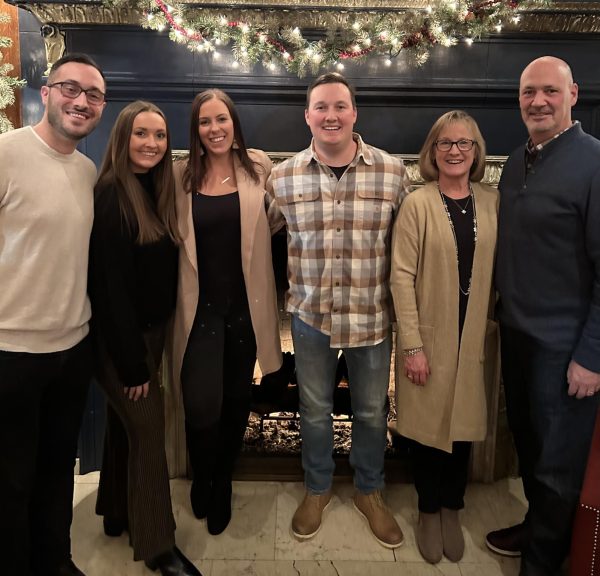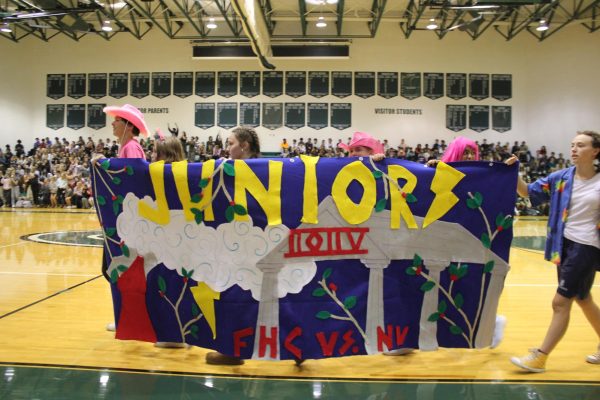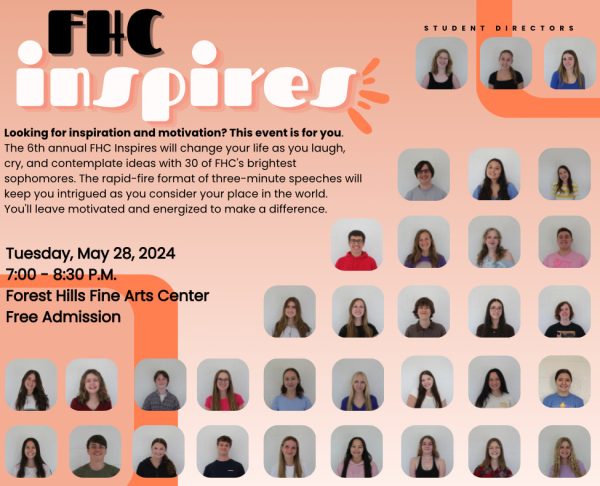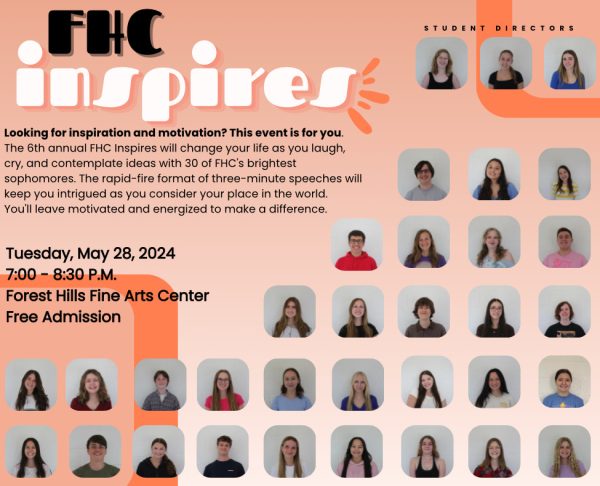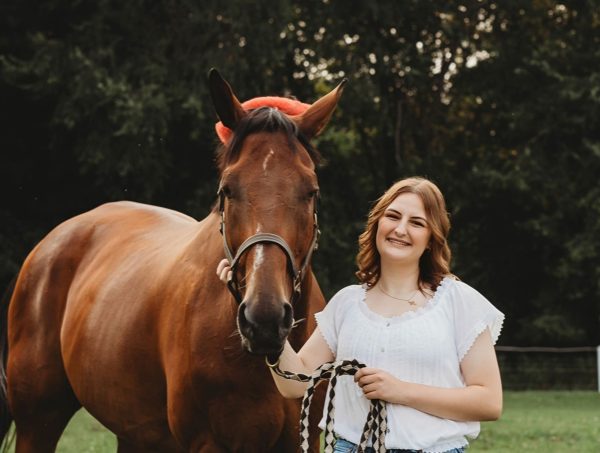Traditions give the community something to look forward to year after year
The layout of the school before it became one building.
In some of the first years of the district, back when the school was just Forest Hills High School, the school consisted of multiple buildings. Students would have to walk from building to building to get to their next class no matter the weather.
However, this setup was not practical for Michigan winters. Students would struggle to reach their classes before the bell rang, so in 1986, the school became one building.
Spanish teacher Tammie Dykhouse started teaching at FHC in 1987, just one year after the initial renovations. In this new setting, she found the atmosphere more welcoming and efficient.
“I think it was a very vibrant time,” Dykhouse said. “Classes were smaller then, so you got to know everybody a little bit better. It was a really good time in education and very exciting.”
Even before this vibrant time in education, there have been traditions—whether they have changed with the times or not—that are still being carried out today. For example, the bonfire, which started in the 60s with each student bringing wood, has become a tradition some can’t imagine homecoming week without.
French teacher Laurie Van Houten, another teacher who has been at FHC since around the time the school became one building, has seen the traditions throughout the years and has seen a difference in the spirit of students.
“Some years there’s really great spirit and some years not,” Van Houten said. “[History teacher Brad] Anderson has done such a good job with bringing spirit back, so it’s been great the last several years. I think we’ve had more spirit than we did ten years ago, and the traditions have been more valued.”
Just as Van Houten noted, Anderson saw a similar change in school spirit as he transitioned from a student to a teacher.
“When I was here [as a student],” Anderson said, “for a couple of years, there were no assemblies because of student conduct. It was very tenuous—almost a students versus staff situation—and it wasn’t good. We have much better school culture now, twenty years on. We have great staff-student relationships. I feel like the students are really a fantastic student body.”
A favorite tradition of most students and teachers alike is homecoming week. Everything from the newest almost-tradition of the Ranger Rumble to the spirit days, from the powder puff game to the real varsity game, and eventually the school dance, Homecoming builds pride in the students; it allows the community to come together and show their school spirit.
“I love everything that is involved in the whole honoring of the alumni, Homecoming, seeing the old kids come back, just the pomp and circumstance of it all,” Dykhouse said in regards to Homecoming week.
As Dykhouse loves the spirit and honoring that comes with Homecoming, Anderson loves the unity it brings to the community.
“It’s not just students anymore,” Anderson said. “It’s students, staff, community members, kids from the lower level schools, and it’s just that whole moment for me is really special. [I] love the whole pageantry of Homecoming week.”
Along with Dykhouse and Anderson, business teacher Kristin O’Brien also loves Homecoming and all of the traditions it holds, but, even more than that, she loves Winterfest and the opportunities the new season provides for the festivities.
“It’s nice to kind of get something fun to do in the middle of the school year,” O’Brien said. “With Homecoming, it’s fun just because it’s at the beginning of the school year, and then Prom obviously is at the end of the year, so it’s just nice to have something right in the middle, [and] we can do things that are a little different like the snow sculptures and window paintings.”
No matter what season it is or what the school is celebrating, the students and staff are in full gear and ready to show their pride. How much pride they show, however, depends on the years of memories and their confidence levels within the school. O’Brien and other teachers can see the different levels of school spirit as they look around an assembly.
“It’s kind of a cool thing to watch how the class changes as they move up from grade to grade, how their school spirit changes, and especially with Homecoming when you look at the lip syncs,” O’Brien said. “Freshman year, there’s usually not very many [people participating], but senior year, you have most of the entire class in that.”
As students gain more school pride each year, they are also growing closer to their peers and their teachers. One of the last traditions in a student’s career, and one of Van Houten’s favorites, is at graduation and allows for one last place to say goodbye.
“I love at graduation that the staff makes two lines, and then, before the graduates go out onto the stage and go sit down or out into the audience, they have to come through that line, and we get to say goodbye to everybody,” Van Houten said. “There are lots of hugs, lots of high-fives, lots of ‘good jobs,’ and it’s kind of the last goodbye for the faculty and the kids they’ve had throughout the four years. I think that’s a really wonderful tradition.”
Whether the tradition happens yearly, or just once throughout a high school career, whether it has been here since the beginning as the school was in multiple buildings, or if it is still in the process of being made, the traditions of FHC are an important part of the school. They give the community something to be excited about. They have built the school into more than just a place to learn.
“You create these traditions that you look forward to, and that’s what makes traditions special,” Anderson said. “They are a marking and a passage of time, and they are experiences that we share with previous generations and future generations. Traditions connect us, they bind us, they create order, and they create something to look forward to on the calendar.”

Lauren Batterbee is a senior entering her third and final year on staff for The Central Trend. She is almost always doing ballet, and if she isn’t, she...





















































































